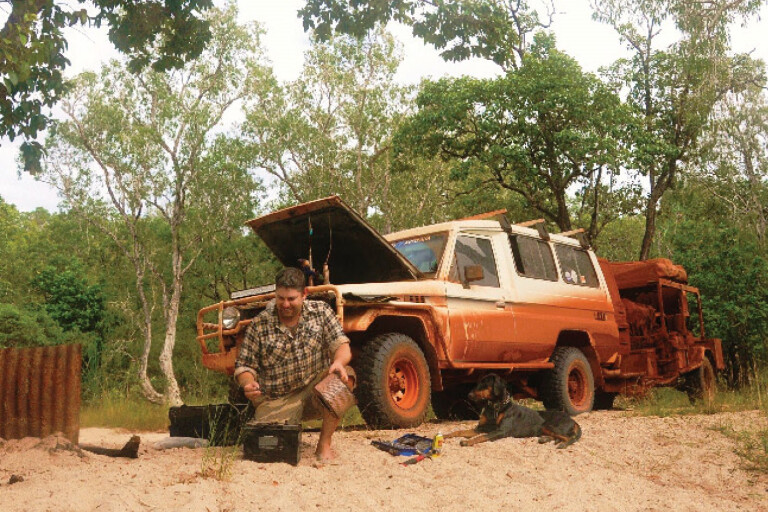
When it comes to lengthy outback trips, mechanical breakages and general servicing are just part of the game. Even if your vehicle has been running like an absolute freight train, you never know when you’ll happen across another traveller who hasn’t shared your good fortune.
A little extra bush-mechanic knowledge can really help get someone out of strife. Plus, if experience has taught us anything, it’s that the little things usually end up causing the biggest problems in the long run.
With that in mind, here are a few common problems to keep an eye out for while you’re out on the road, along with some mighty helpful bush fixes.
STRANDED TRAVELLERS
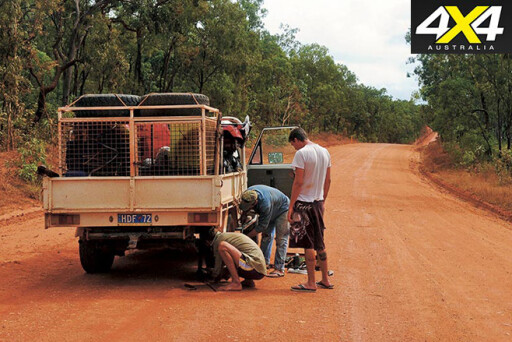
On my way south on the Developmental Road up in Cape York I came across three fellas in an old LandCruiser who were stuck dead-set in the middle of the road. The rear diff had called it quits and completely locked up, preventing the wheels from spinning altogether.
Sounds pretty bad, eh? Well, it was. But that didn’t mean it was game over. In this situation, there are a few steps involved to get the vehicle mobile again. The idea is to basically completely disable and disconnect the seized rear diff from the rest of the driveline, and drive it to the closest town using the front diff (front-wheel drive) only.
To do this we removed the rear axles, which on the old Cruiser was a matter of simply removing the axle nuts and collets before sliding out the axle. Doing this basically disconnects the seized diff from the wheels and wheel bearings so that they can spin (roll) freely, which we checked once it was jacked up.
The end of the axle also acts as a dust cover for the wheel bearings, so we decided to make a makeshift bearing cap by cutting an old plastic Two Fruits container in half and duct-taping it around the hub.
It was then time to disconnect drive from the transfer case to the rear diff by removing the rear tailshaft altogether. Then it was a matter of locking in the hubs, selecting 4WD and trying your luck – worked a charm!
FINDING A LEAK
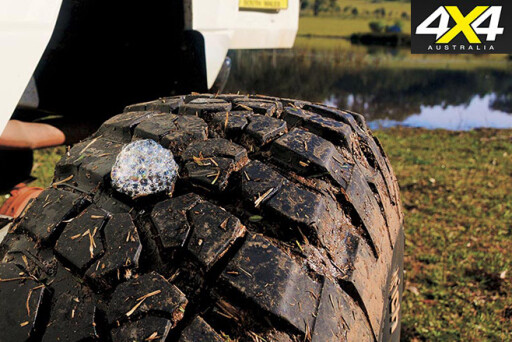
One of the most common problems to come across is a tyre with a slow leak. This is one of those small annoyances that can cause bigger problems down the track if you don’t catch it early. If you let it get worse, it gets flatter and ends up shredding the tyre, which destroys it altogether.
There are a few ways to find a small leak, the most popular being the soapy water method. Simply spray soapy water over the fully inflated tyre and watch for air bubbles.
If you don’t have soapy water, or you can’t spot the leak, the next best method is to find a clear river or stream and completely submerge the wheel and tyre, then watch carefully for any air bubbles and track it down from there. Pay particular attention to the tyre bead and the valve.
WHEEL BEARINGS
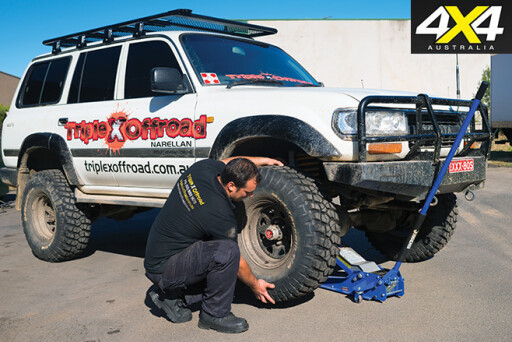
I’ve got little habit that helps me keep a close eye on my wheel bearings. All I do is make sure I check the wheel bearings every fuel stop as soon as I jump out of the car. I look for any visual signs like grease spray on the rim. Then I’ll put the back of my hand against the top of the tyre to feel how hot it is – a warm tyre could also indicate an underinflated tyre. Then I’ll edge my hand closer until it touches the bearing cap. Warm bearings aren’t an issue, but if they’re too hot to touch or hold you know you’ve got a problem.
If you’ve been braking heavily the whole assembly could also heat up the bearings, so it’s a good time to stop for a break if they’re getting too hot. I also do a basic check for free play by grabbing the top of the tyre and pulling it back sharply towards me – trust me, you’ll know when it’s loose.
THE SPANNER RUN
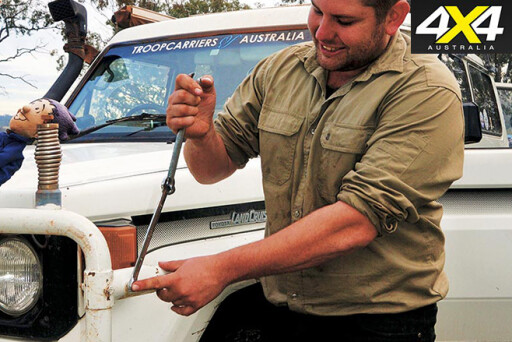
Corrugations play havoc on nuts and bolts. So every few days, it’s a wise idea to go over and under your 4WD and run a spanner over any nuts and bolts.
Over time, you’ll get to know which bolts commonly come loose. I’ve found on both my Cruisers that the axle studs, kingpin bearings and tailshaft bolts all tend to loosen up. Plus, the front diff bolts and shock mount bolts need to be tightened every 10,000 kays or so. This simple preventative maintenence could save you from bigger problems down the track.
COUPLING NUT
If there’s one thing I’ve learnt over the past few years, it’s to check the tow coupling nut hasn’t come loose, particularly on the poly-block coupling. The bolt thread on older couplings can stretch over time, while cheaper imported products often use poor quality steel that stretches prematurely.
As a result, after a few days of travel, I like to nip up the nut and make sure it’s nice and tight. It’s also a good idea to apply a thread locker additive on the thread to add some extra strength and grip. However, on a recent trip this wasn’t enough, so I had to install a second nut and lock them tightly together until I could source a replacement.
If the coupling gets damaged altogether, a last resort is to remove it completely and keep the poly block attached using the pin, a peg and a good-sized washer.
REAR SPRINGS
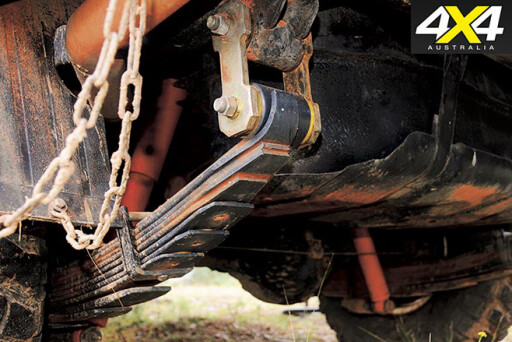
One of the most common problems for late-model utes is overloaded rear springs and a damaged chassis. It’s surprisingly common for the rear leaf springs to completely invert. In most cases you can continue driving the vehicle to the closest town, but there are a few little tricks that can help take the load off the springs.
First, drop tyre pressures nice and low to help smooth out those harsh bumps that springs find it hard to deal with. Secondly, shift the weight around to take the load off the back springs. You can do this by moving stuff in the tray as far forward as possible, while also moving the gear in the trailer further back – or even ditching the extra weight.
In extreme cases, where the spring mount completely fails, you can wrap a heavy-rated ratchet strap around the diff and the leaf-spring mount to stop it moving forward or backwards. Also, wedge a block of wood between the diff and chassis to support the body’s weight. Obviously this is an extreme case to get you to the main track.
TOP TRICKS FOR BEACH CAMPING
SAND PEGS
If your sand pegs don’t cut the mustard, try filling up a plastic bag with sand and burying it with the guy rope attached. This kind of sand anchor works a treat when the wind is up.
UNHITCHING THE CAMPER
When it comes to camping on sand, things tend to get complicated when you unhitch the camper. The problem occurs when you try to hitch up the trailer and both the jockey wheel and the 4x4’s wheels sink in the sand and won’t go where you need them to. A top little trick is to carry a couple of planks of wood to place under the camper’s wheels and the jockey wheel. It allows you to move the camper around a lot more easily, which is helpful when the ball is within inches of the hitch.



COMMENTS